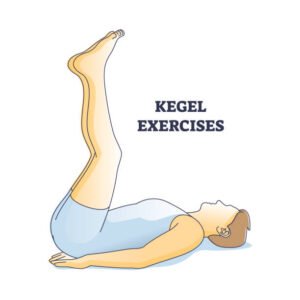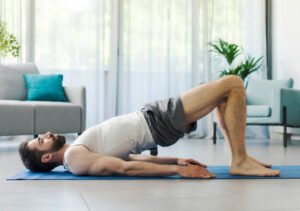Kegel Exercises for Men: Unlocking the Benefits for Strength, Health, and Confidence
When it comes to fitness and health, men often focus on building muscle, improving cardiovascular health, or enhancing athletic performance. However, one area that is frequently overlooked is pelvic floor health. Enter Kegel exercises—a simple yet powerful practice that can yield significant benefits for men of all ages. Whether you’re looking to improve bladder control, enhance sexual health, or boost overall core strength, Kegel exercises for men are a game-changer.
In this article, we’ll dive deep into the world of Kegel exercises for men, exploring their benefits, how to perform them correctly, and why they should be a staple in your fitness routine.
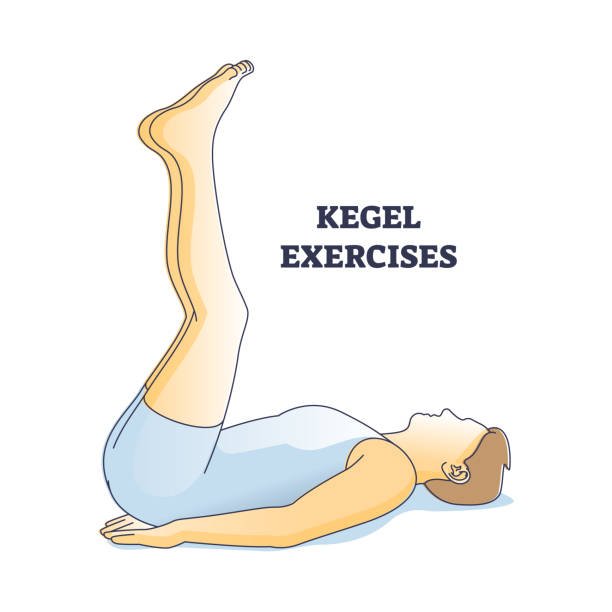
What Are Kegel Exercises?
Kegel exercises, named after Dr. Arnold Kegel, who first introduced them in the 1940s, are designed to strengthen the pelvic floor muscles. These muscles support the bladder, bowel, and sexual function. While Kegels are often associated with women, particularly during pregnancy and postpartum recovery, they are equally beneficial for men.
For men, the pelvic floor muscles play a crucial role in:
- Controlling urination and bowel movements
- Supporting sexual health and performance
- Stabilizing the core and improving posture
Benefits of Kegel Exercises for Men
- Improved Bladder Control
As men age, issues like urinary incontinence or an overactive bladder can become more common. Kegel exercises strengthen the pelvic floor muscles, which help control the release of urine. This can be particularly beneficial for men recovering from prostate surgery or dealing with age-related bladder issues. - Enhanced Sexual Health
Strong pelvic floor muscles are directly linked to better sexual performance. Kegels can help men achieve stronger erections, improve stamina, and even experience more intense orgasms. Additionally, these exercises can aid in preventing or managing erectile dysfunction (ED). - Faster Recovery After Prostate Surgery
Men who undergo prostate surgery often experience urinary incontinence and sexual dysfunction. Regularly performing Kegel exercises before and after surgery can speed up recovery and improve outcomes. - Stronger Core and Better Posture
The pelvic floor muscles are an integral part of the core. Strengthening them through Kegels can lead to better posture, reduced lower back pain, and improved overall stability. - Boosted Confidence
Knowing that you have control over your bladder and sexual health can significantly boost your confidence. Kegel exercises empower men to take charge of their bodies and well-being.
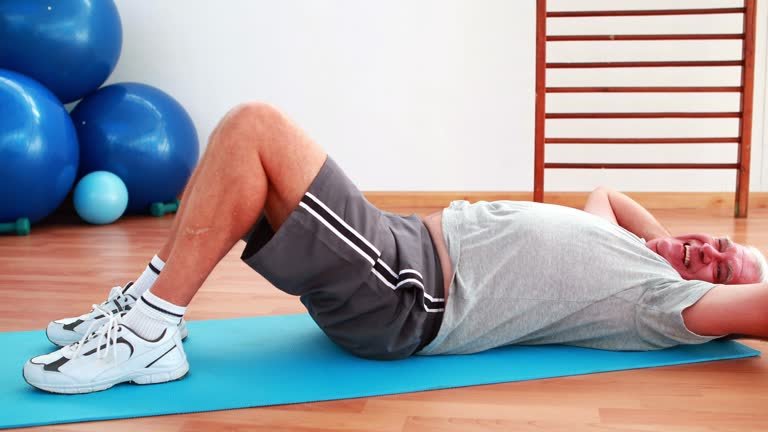
How to Perform Kegel Exercises for Men
Performing Kegel exercises is simple, but it’s essential to do them correctly to reap the benefits. Follow these steps:
- Identify the Right Muscles
To locate your pelvic floor muscles, try stopping the flow of urine midstream. The muscles you use to do this are the ones you’ll engage during Kegel exercises. - Get into Position
You can perform Kegels while lying down, sitting, or standing. Choose a position that feels comfortable for you. - Engage and Hold
Tighten your pelvic floor muscles and hold the contraction for 3-5 seconds. Relax for the same amount of time. - Repeat
Aim for 10-15 repetitions per session. Gradually increase the duration of the contractions and the number of repetitions as your muscles get stronger. - Stay Consistent
Consistency is key. Aim to perform Kegel exercises at least 3-4 times a week for optimal results.
Common Mistakes to Avoid
- Holding Your Breath: Breathe normally while performing Kegels.
- Engaging the Wrong Muscles: Avoid tightening your abs, thighs, or buttocks.
- Overdoing It: Start slowly and gradually increase intensity to prevent muscle fatigue.
Incorporating Kegel Exercises into Your Routine
Kegel exercises are discreet and can be done anywhere, making them easy to incorporate into your daily routine. Try performing them:
- While brushing your teeth
- During your morning commute
- While watching TV
- Before bed
Frequently Asked Questions
1. How long does it take to see results from Kegel exercises?
Most men notice improvements within 4-6 weeks of consistent practice.
2. Can Kegel exercise help with premature ejaculation?
Yes, strengthening the pelvic floor muscles can help improve control and delay ejaculation.
3. Are there any risks associated with Kegel exercises?
When performed correctly, Kegel exercises are safe. However, overdoing it can lead to muscle strain.
The Science Behind Kegel Exercises for Men
Understanding the science behind Kegel exercises can help you appreciate their importance even more. The pelvic floor is a group of muscles and tissues that form a sling at the base of the pelvis. These muscles support vital organs, including the bladder, rectum, and prostate. When these muscles weaken—due to aging, surgery, or a sedentary lifestyle—it can lead to a host of issues, such as incontinence, pelvic pain, and sexual dysfunction.
Kegel exercises work by contracting and relaxing the pelvic floor muscles, much like lifting weights strengthens your biceps or quads. Over time, these contractions increase blood flow to the pelvic region, improve muscle tone, and enhance nerve function. This not only addresses existing problems but also prevents future issues by maintaining pelvic health.
Kegel Exercises and Prostate Health
Prostate health is a significant concern for men, especially as they age. Conditions like benign prostatic hyperplasia (BPH) and prostate cancer can affect urinary and sexual function. Kegel exercises can play a supportive role in managing these conditions.
For men with BPH, Kegels can help reduce urinary symptoms by strengthening the muscles that control urine flow. For those recovering from prostate cancer surgery, Kegels are often recommended as part of rehabilitation to regain bladder control and sexual function. By incorporating Kegel exercises into your routine, you can take proactive steps to support your prostate health.
Kegel Exercises for Athletes and Fitness Enthusiasts
If you’re an athlete or fitness enthusiast, you might be surprised to learn how Kegel exercises can enhance your performance. A strong pelvic floor contributes to better core stability, which is essential for activities like weightlifting, running, and cycling.
For example, powerlifters and bodybuilders rely on core strength to lift heavy weights safely. Weak pelvic floor muscles can lead to poor form and even injuries. By adding Kegels to your training regimen, you can improve your core stability, enhance your performance, and reduce the risk of injury.
Kegel Exercises and Mental Health
The benefits of Kegel exercises aren’t just physical—they can also have a positive impact on your mental health. Issues like urinary incontinence or erectile dysfunction can take a toll on your self-esteem and confidence. By addressing these problems through Kegel exercises, you can regain a sense of control over your body and improve your overall well-being.
Moreover, the mindfulness required to perform Kegels correctly can serve as a form of meditation. Focusing on your breath and the contraction of your pelvic floor muscles can help reduce stress and promote relaxation.
Advanced Kegel Techniques for Men
Once you’ve mastered the basics of Kegel exercises, you can explore advanced techniques to further enhance your results. Here are a few to try:
- Quick Flicks: Rapidly contract and relax your pelvic floor muscles for 1-2 seconds each. This helps improve muscle responsiveness.
- Elevator Kegels: Imagine your pelvic floor as an elevator. Slowly contract the muscles in stages, as if the elevator is rising floor by floor. Hold at the top, then release gradually.
- Resistance Training: Use Kegel weights or resistance bands designed for pelvic floor exercises to add intensity to your routine.
These advanced techniques can help you target different aspects of pelvic floor strength and endurance.
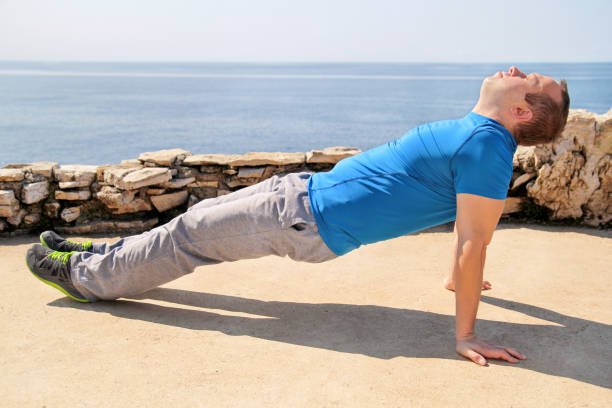
Kegel Exercises and Aging
As men age, the pelvic floor muscles naturally weaken, leading to issues like incontinence and reduced sexual function. However, aging doesn’t have to mean a decline in quality of life. Kegel exercises are a practical and effective way to combat these age-related changes.
By starting Kegel exercises early and maintaining them as part of your routine, you can preserve pelvic floor strength and function well into your later years. It’s never too late to start—even men in their 60s, 70s, and beyond can benefit from these exercises.
Real-Life Success Stories
Many men have experienced life-changing results from incorporating Kegel exercises into their routines. For example, John, a 45-year-old father of two, struggled with urinary incontinence after prostate surgery. After just six weeks of consistent Kegel exercises, he noticed a significant improvement in bladder control and regained his confidence.
Similarly, Mike, a 30-year-old fitness enthusiast, found that Kegels helped him improve his core strength and athletic performance. He credits the exercises with helping him achieve new personal bests in his weightlifting routine.
These stories highlight the transformative power of Kegel exercises and serve as inspiration for anyone considering giving them a try.
Tools and Apps to Support Your Kegel Journey
If you’re looking for additional support, there are several tools and apps available to help you stay on track with your Kegel exercises. For example:
- Kegel Training Apps: Apps like “Kegel Trainer for Men” or “Pelvic Floor Fitness” provide guided routines, progress tracking, and reminders to keep you consistent.
- Kegel Weights: These small, weighted devices can be inserted to add resistance and make your workouts more effective.
- Biofeedback Devices: These devices provide real-time feedback on your pelvic floor muscle activity, helping you ensure you’re performing the exercises correctly.
Using these tools can make your Kegel journey more engaging and effective.
Final Thoughts
Kegel exercises for men are more than just a fitness trend—they’re a proven way to improve your health, enhance your quality of life, and boost your confidence. Whether you’re dealing with specific issues like incontinence or erectile dysfunction or simply looking to strengthen your core and support your overall well-being, Kegels offers a simple, effective solution.
The best part? Kegel exercises require no special equipment, can be done anywhere, and take just a few minutes a day. With consistency and proper technique, you can unlock their full range of benefits.
So, take the first step today. Your pelvic floor—and your future self—will thank you!
Conclusion
Kegel exercises for men are a simple yet powerful tool for improving bladder control, enhancing sexual health, and boosting overall confidence. By incorporating these exercises into your routine, you can take proactive steps toward a healthier, more vibrant life.

